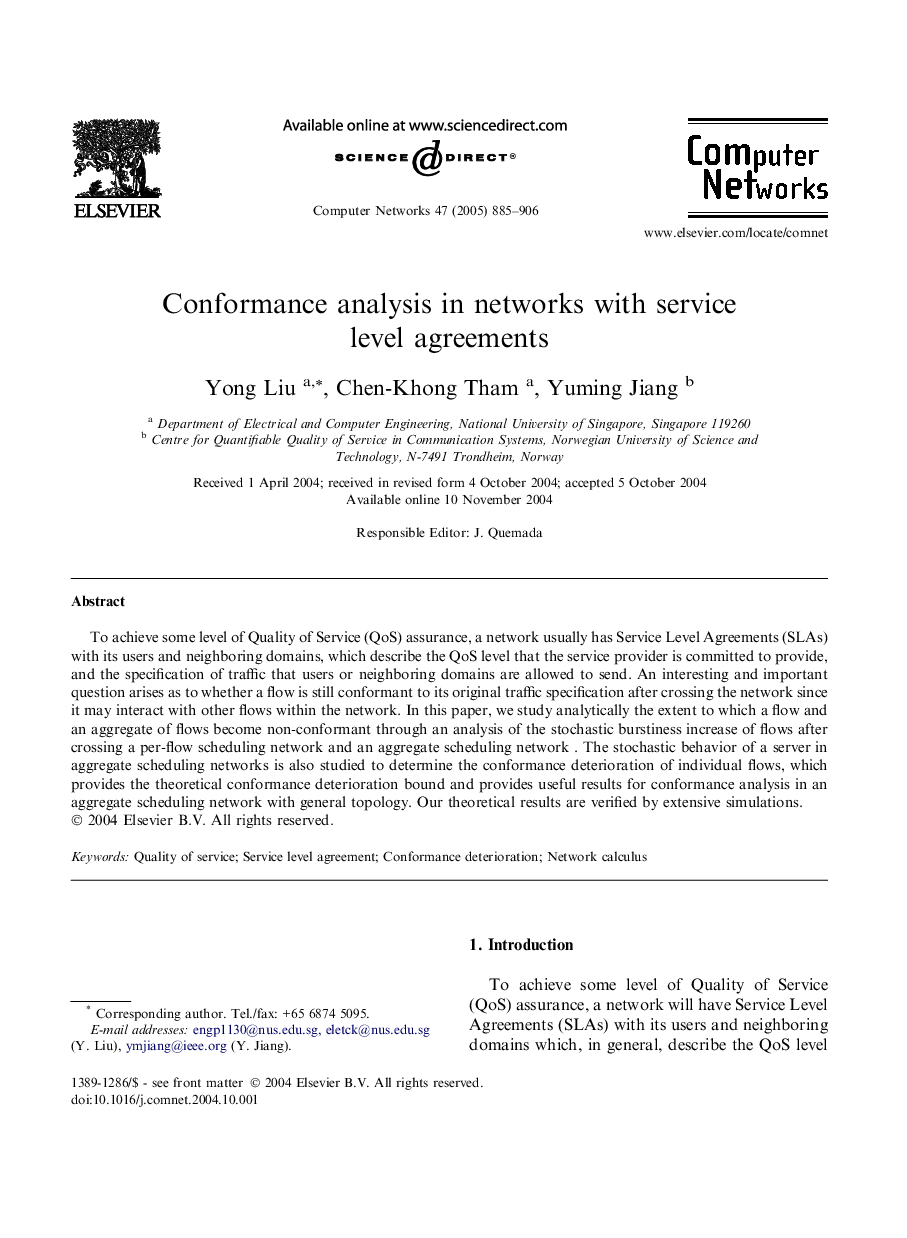| Article ID | Journal | Published Year | Pages | File Type |
|---|---|---|---|---|
| 10339661 | Computer Networks | 2005 | 22 Pages |
Abstract
To achieve some level of Quality of Service (QoS) assurance, a network usually has Service Level Agreements (SLAs) with its users and neighboring domains, which describe the QoS level that the service provider is committed to provide, and the specification of traffic that users or neighboring domains are allowed to send. An interesting and important question arises as to whether a flow is still conformant to its original traffic specification after crossing the network since it may interact with other flows within the network. In this paper, we study analytically the extent to which a flow and an aggregate of flows become non-conformant through an analysis of the stochastic burstiness increase of flows after crossing a per-flow scheduling network and an aggregate scheduling network . The stochastic behavior of a server in aggregate scheduling networks is also studied to determine the conformance deterioration of individual flows, which provides the theoretical conformance deterioration bound and provides useful results for conformance analysis in an aggregate scheduling network with general topology. Our theoretical results are verified by extensive simulations.
Related Topics
Physical Sciences and Engineering
Computer Science
Computer Networks and Communications
Authors
Yong Liu, Chen-Khong Tham, Yuming Jiang,
